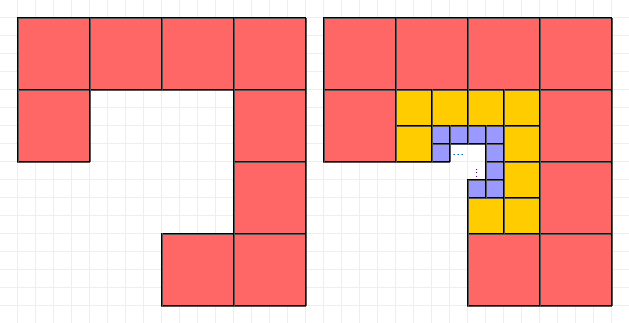Question 1: Is there a polygon $P$ that
- cannot tile the plane
and
- tiles the plane when copies of $P$ and some other polygon(s) all similar in shape to $P$ but of different size(s) can be used?
Basically, with copies of $P$ alone we should be able to form a layout with gaps which are all similar in shape to P and of different size(s).
Motivation: In basic tiling, we are constrained to use congruent copies of a candidate polygonal region (congruent up to some isometry) to fill the plane without gaps. Here, we consider relaxing the constraint to allow scaled copies of the candidate region and try to see whether this relaxation can non-trivially improve the chance a candidate region has of being a tile.
Note: Two cases to this question – $P$ is convex and not necessarily so.
Question 2: Is there a $P$ such that it is not a rep-tile but a large copy of $P$ can be tiled by several units all similar to $P$?
Note: By rep-tile, we mean a polygon that can be cut into some finite number of equally scaled down copies of itself. So, the $P$ one is looking for cannot be tiled by any finite number of equally scaled down copies of itself but can be tiled with copies of itself which have been scaled down by factors that are different among themselves.










